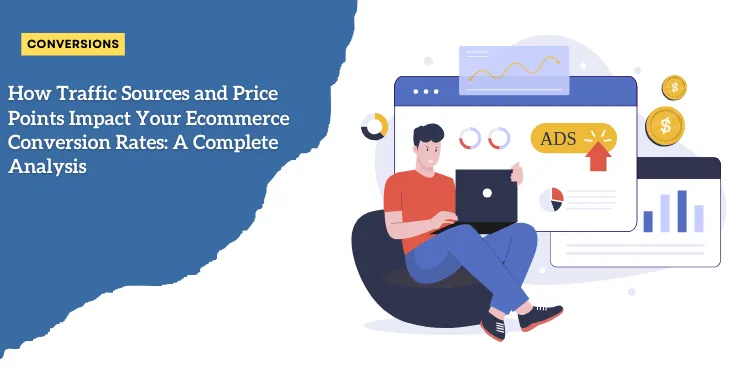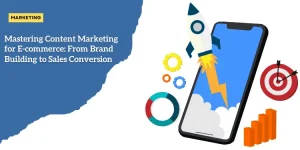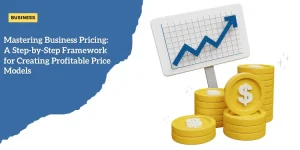How Traffic Sources and Price Points Impact Your Ecommerce Conversion Rates: A Complete Analysis

Anúncios
The Myth of a Universal Benchmark for Ecommerce Conversion Rates
For many ecommerce businesses, the hunt for a universal benchmark for conversion rates feels like searching for the Holy Grail.
The reality, however, is more complex.
Anúncios
A single, universal benchmark doesn’t exist because conversion rates are influenced by numerous factors unique to each business.
Factors such as traffic sources and product price points play significant roles.
For instance, businesses relying heavily on ad-driven traffic or blog posts generally see lower conversion rates compared to those drawing from existing customers or social media followers.
Anúncios
This isn’t inherently bad; it simply means these businesses are attracting more new visitors who are less likely to convert on their first visit.
Why Higher Conversion Rates Aren’t Always Better
It’s a common misconception that higher conversion rates are always better.
While conversion rates are a crucial metric, obsessing over them can sometimes lead businesses down the wrong path.
For example, a high conversion rate doesn’t guarantee high revenue.
Businesses with high-ticket items may have lower conversion rates, yet they generate substantial revenue per sale.
Moreover, a very high conversion rate could also signal underpricing.
If products are priced too low, almost everyone buys, but is it sustainable? It might indicate you’re leaving money on the table or undervaluing your product or service.
The Importance of Context in Measuring Conversion Success
Understanding your ecommerce conversion rate in context is vital.
Instead of focusing solely on the percentage, consider the surrounding elements:
- 🌐 Traffic Quality: Compare conversion rates from different sources to understand which channels drive the most valuable traffic.
- 💸 Price Points: Recognize the correlation between the cost of goods and conversion rates. Higher-priced items typically require more consideration, which affects conversion.
- 📅 Seasonality and Trends: Be aware of how trends and seasonal factors play into your conversion rates. These can fluctuate greatly and often don’t reflect long-term performance.
Ultimately, while it’s useful to be aware of industry averages, your store’s benchmarks should be customized according to your specific context and goals.
Understanding these nuances allows for more strategic decisions that align with your business model and long-term objectives.
This comprehensive approach ensures that conversion rates are seen not just as a number, but as a meaningful metric that informs better overall business decisions.
To grasp how different factors influence conversion rates, let’s delve into how traffic sources and pricing strategies play pivotal roles in shaping these metrics.
How Traffic Sources Shape Your Conversion Rates
Your ecommerce site’s conversion rates can vary widely based on where your traffic is coming from.
Understanding these nuances is essential to interpreting your metrics accurately and making informed decisions to optimize your strategy.
Comparison of Conversion Rates Between Ad-Driven Traffic and Existing Customer Traffic
Not all visitors to your site are created equal. Traffic driven by ads often has a lower conversion rate than traffic from existing customers.
This is largely because ad-driven traffic involves visitors who are usually new to your brand.
They might be browsing out of curiosity or a passing interest, which decreases the likelihood of an immediate purchase.
On the contrary, existing customers are already familiar with your brand, trust your products, and are likely to have a higher conversion rate due to their established loyalty and previous satisfactory experiences.
Impact of Blog Posts and First-Time Visitors on Conversion Metrics
Blog posts can be an excellent tool for driving traffic to your ecommerce store, but this traffic is typically composed of first-time visitors.
These visitors are often in the research phase, looking for information or solutions to problems.
While they might not convert immediately, blog posts can build trust and keep your brand top of mind, increasing the chances of future purchases. First-time visitors generally have lower conversion rates since they need more time and information to make a buying decision.
Strategies for Interpreting Conversion Rates Based on Traffic Sources
Interpreting your conversion rates accurately involves a keen understanding of the sources driving your traffic.
Here are some strategies:
- 🔍 Segment Your Data: Break down your conversion rates by traffic source. This segmentation allows for a clearer picture of how each source performs individually.
- 🎯 Evaluate Campaign Objectives: Understand the goal of each traffic source. For example, ad campaigns might be aimed at brand awareness while email campaigns target repeat sales. Comparing these directly can be misleading.
- 🚶♂️ Consider the Customer Journey: Recognize that different traffic sources represent different stages of the customer journey. A new visitor from an ad is at the start, while an existing customer is further along the path, close to making repurchases.
This granular approach helps in tailoring marketing strategies to cater to the unique characteristics and behaviors associated with each traffic source, providing a more accurate measure of success.
By taking these factors into account, you can better understand and leverage your traffic sources to improve your overall conversion rates.
Every piece of data tells a part of your ecommerce story, and interpreting them in context allows you to craft strategies that align with your business objectives.
Transitioning into the next critical area, we will explore how price points influence your conversion rates and what pricing strategies can help optimize your sales.
The Price Point Factor in Conversion Rates
Product price plays a crucial role in shaping ecommerce conversion rates.
Let’s explore how price impacts customer behavior and how businesses can balance their pricing strategy with conversion rate expectations.
Understanding the Correlation Between Product Price and Conversion Rates
Generally, higher-priced items tend to have lower conversion rates.
The larger the price tag, the more time consumers need to consider the purchase.
High prices often mean a more significant share of the consumer’s income is required, resulting in increased deliberation.
This dynamic creates a direct correlation between price points and conversion rates.
Key Price Thresholds Affecting Consumer Behavior
There are specific price thresholds where consumer behavior changes noticeably:
- $50 Threshold: Products priced under $50 tend to fall within the impulse purchase category. Consumers are more likely to buy these items with minimal consideration, resulting in higher conversion rates.
- $150 Threshold: When product prices exceed $50 but remain below $150, the decision-making process begins to lengthen. Purchasers start weighing the pros and cons more carefully, which can slightly drop conversion rates.
- $500 Threshold: Items priced between $150 and $500 require significant investment from the consumer. At this level, the buyer research intensifies, and conversions generally happen after careful evaluation. As a result, conversion rates drop considerably compared to lower-priced items.
Balancing Pricing Strategy with Conversion Rate Expectations
While a higher price point might lead to lower conversion rates, it’s essential to recognize that a reduced conversion rate does not always imply a business isn’t doing well.
Higher-priced products, though they convert less frequently, often generate more significant revenue per sale.
Here are a few strategies to balance pricing and conversion:
| Strategy | Description |
|---|---|
| 💡 Value Proposition Clarity | Clearly communicate your product’s value and highlight its unique selling points to demonstrate why it’s worth the price. |
| 💳 Flexible Payment Options | Offer installment plans or financing options to make higher-priced items more accessible, increasing the likelihood of conversion. |
| 🛠️ Enhanced Customer Service | Provide strong post-purchase support, clear return policies, and warranties to reduce the perceived risk of purchasing a high-priced product. |
Recognizing the impact of price on conversion rates helps businesses fine-tune their pricing strategy to optimize both sales volume and revenue.
Understanding these price dynamics provides valuable context for interpreting conversion rates effectively, aiding in more strategic business decisions.
Moving forward, understanding these purchasing patterns can guide product offerings and marketing efforts for optimal performance.
Subscription vs. One-Time Purchase Conversion Patterns
Why Subscription Products Typically See Lower Conversion Rates
Understanding why subscription products often exhibit lower conversion rates compared to one-time purchases requires a closer look at consumer psychology.
The primary reason is commitment. Subscribing to a service entails an ongoing obligation, not just a single transaction.
Consumers must weigh the long-term utility and cost versus a one-time buy, leading to more cautious decision-making.
Moreover, subscription ecommerce stores usually attract fewer repeat customers.
Although every visit represents potential for conversion, returning customers are more likely to follow through with their purchases compared to new visitors exploring subscription options for the first time.
The fewer visits from return buyers, the less the overall conversion rate—directly impacting the average metrics of such stores.
The Impact of Commitment Levels on Purchase Decisions
The level of commitment required for different purchase types significantly affects conversion rates.
One-time purchases generally involve a lower threshold of commitment from the buyer, making them easier to convert.
Subscriptions, on the other hand, ask customers to pledge continued use over a period, be it monthly, annually, or seasonally.
This higher level of commitment can cause hesitation, leading consumers to deliberate and research extensively before they make a decision.
Subscription models often face an additional challenge: cancellation anxiety. The thought of getting locked into a deal that might be hard to exit can be a significant deterrent.
Thus, it is crucial for businesses to address these concerns upfront. Offering flexible cancellation policies or trial periods can help mitigate these apprehensions and enhance conversion rates by lowering the perceived risk.
Understanding Customer Return Patterns for Different Purchase Types
Customer return patterns vary greatly depending on whether the product is a one-time purchase or a subscription service. One-time purchase customers are generally driven by a need or desire that they want to be met immediately.
Repeat purchases occur when customers experience satisfaction with their initial buy, leading them to revisit.
Conversely, subscription-based models may feel like more of a commitment than customers are willing to make on their first visit.
However, once customers subscribe and get intrinsic value from the service, they become more locked-in, often leading to higher lifetime value despite the lower initial conversion rate.
Therefore, it’s essential for subscription services to focus on delivering consistent value to encourage renewals.
Identifying these patterns and understanding why they occur allows ecommerce platforms to set realistic conversion goals and implement strategies tailored to each purchase type’s unique dynamics.
By recognizing and adapting to the inherent differences between subscription and one-time purchase conversion rates, ecommerce businesses can set more accurate benchmarks for their performance and identify areas for strategic improvements.
Benchmarking Your Store’s Performance
Every ecommerce store is unique, making the benchmarking process crucial for understanding your store’s performance.
Instead of relying on universal benchmarks, which are often misleading, consider the specific factors influencing conversion rates.
How to Effectively Compare Your Conversion Rates Against Industry Averages
When comparing your conversion rates, it’s easy to fall into the trap of measuring against a universal standard. Instead, use industry-specific benchmarks.
For example, the average conversion rate can range dramatically based on the industry. Apparel might see a 1-2% rate, while electronics might hover around 2-3%. Utilize these averages not as rigid goals but as guidelines to understand where you stand.
Adjusting Expectations Based on Your Business Model
Your business model plays a significant role in setting realistic expectations.
Are you focusing on a subscription-based model or one-time purchases? For subscription products, lower conversion rates are common due to the higher commitment required.
Therefore, assess the lifetime value of customers rather than just first-time conversions. Conversely, one-time purchases may drive higher initial conversion rates, but they require continual customer acquisition efforts.
Adapt your strategy and expectations to the dynamics of your specific model.
Using Benchmarks to Identify Improvement Opportunities
Benchmarks are not just comparison tools; they are windows for identifying opportunities.
If your rates fall below industry standards, dig deeper to understand why.
Is it your pricing strategy or your traffic sources? Perhaps refining your ad campaigns or enhancing your social media presence can help.
Benchmarks should drive you to discover and target areas for improvement, from user experience enhancements to more effective marketing strategies.
Understanding how well your store performs involves more than just hitting a number. It’s about contextualizing your conversion rates and continuously finding ways to optimize your approach.
By embracing your business’s unique characteristics, you can turn benchmarks into meaningful growth opportunities.






